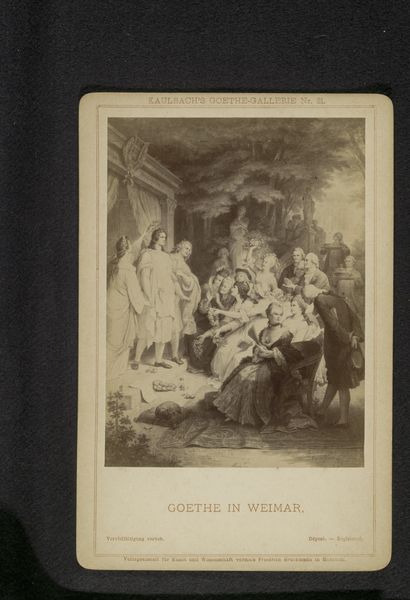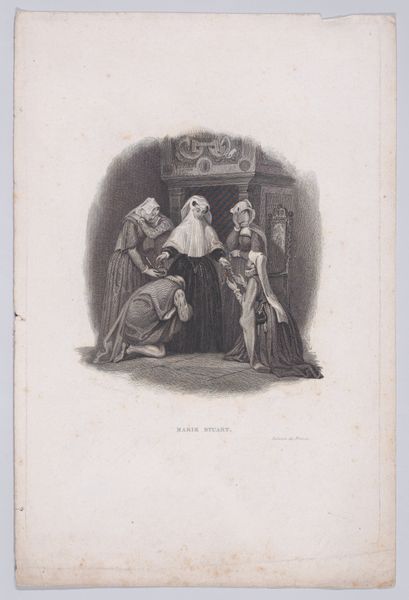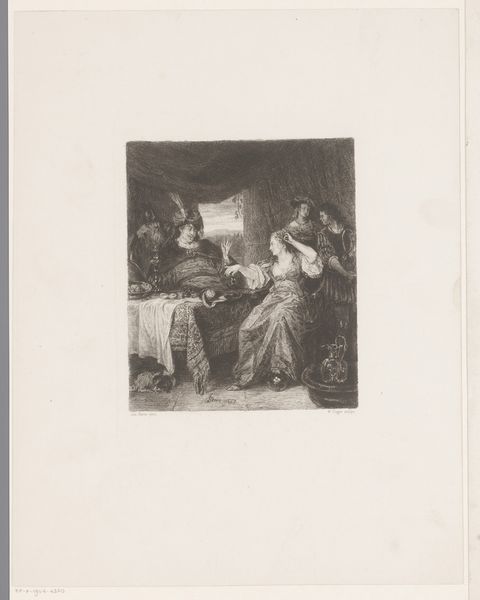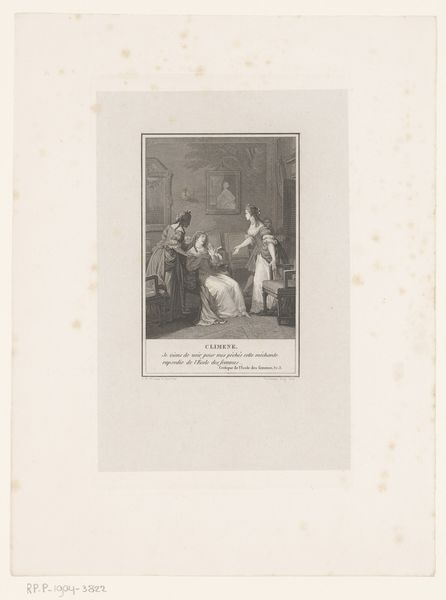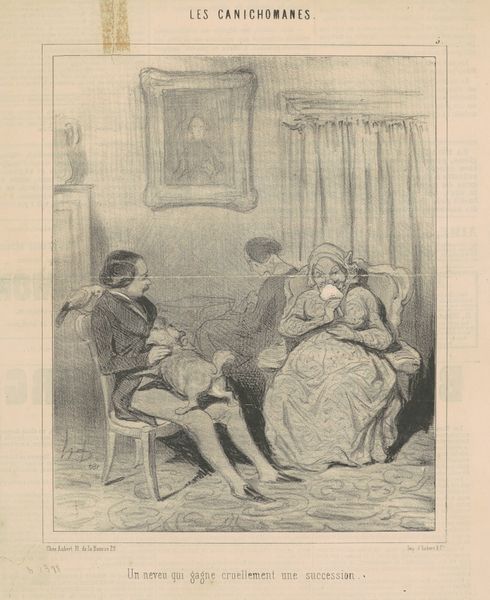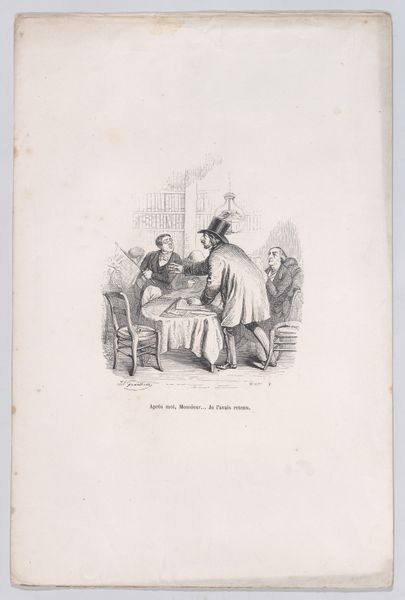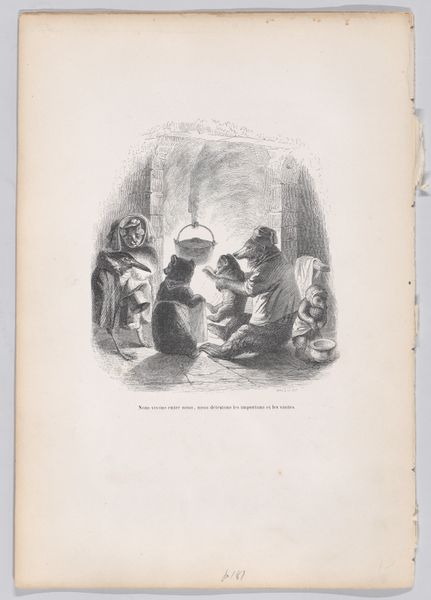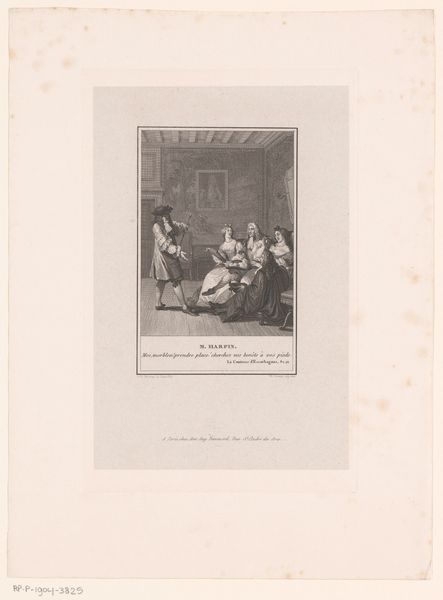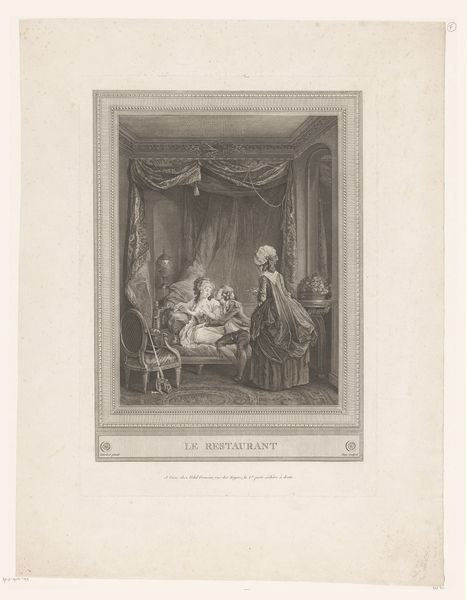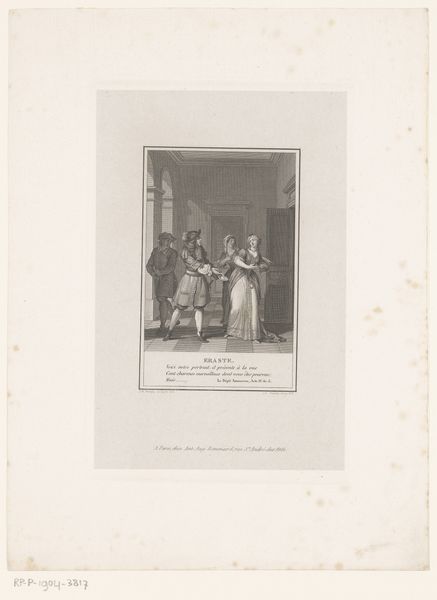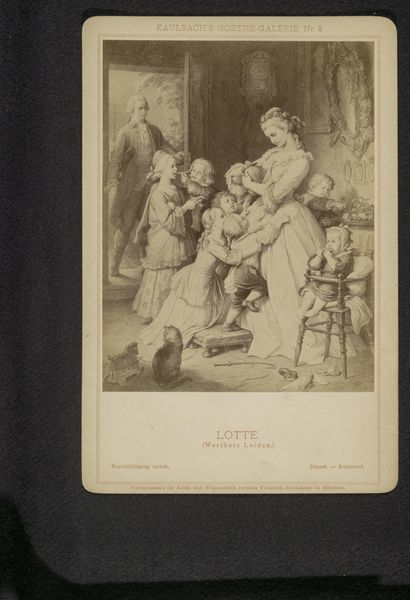
Fotoreproductie van een scène met Adelheid uit Goethe's Götz von Berlichingen met de ijzeren hand c. 1880 - 1885
0:00
0:00
Dimensions: height 125 mm, width 95 mm
Copyright: Rijks Museum: Open Domain
Editor: This is a photo reproduction from around 1880 to 1885. It depicts a scene from Goethe's play, "Götz von Berlichingen with the Iron Hand," featuring the character Adelheid. The photo's sepia tone gives it a very old-world feel, almost theatrical. What historical and social contexts shaped its creation and interpretation? Curator: Precisely! Consider the rise of Romanticism in the 19th century. Goethe's play was pivotal, celebrating individualism and challenging social norms. This image, likely a promotional piece, reflects that. Think about how theatre and literature were central to shaping public discourse and national identity. The presence of Adelheid points to an important interrogation around gender roles. What’s your sense of her portrayal here? Is she a passive figure, or is there something more complex at play? Editor: She seems rather contemplative, perhaps even cunning, as she observes the chessboard. It makes me think she's strategizing, not just playing a game. Curator: Exactly! And this is where we delve into feminist interpretations. Was this a deliberate choice to reclaim her narrative from typically patriarchal readings of Romantic heroes? Could this visual interpretation provide us with avenues of discussing social resistance and women's place within power structures of the period? The composition - her central position, the gazes of the surrounding figures - it all demands deeper analysis. Editor: I hadn’t considered how her placement might suggest a subtle form of defiance or challenge to traditional roles. Curator: It’s in these details that art history becomes a powerful tool. These photographs, often overlooked, carry layered messages about identity, power, and the ever-evolving negotiation of social norms. This piece urges us to reflect on how representations can either reinforce or subvert existing power dynamics. Editor: So, by examining even what seems like a straightforward historical photograph, we can uncover broader dialogues about gender, power, and social change. Thanks! Curator: Indeed. It is exciting to continue to push boundaries and find connections between artistic interpretations and broader socio-political realities.
Comments
No comments
Be the first to comment and join the conversation on the ultimate creative platform.
